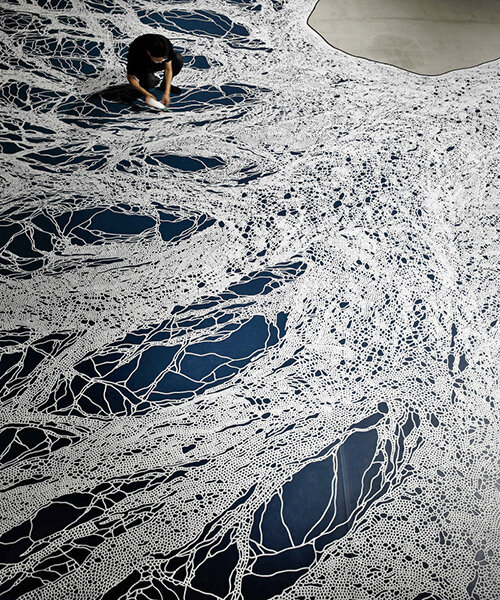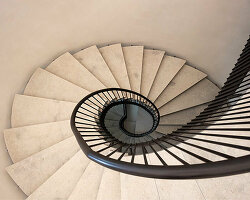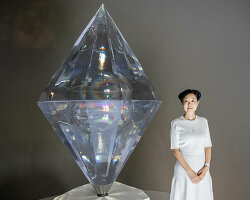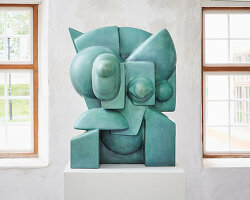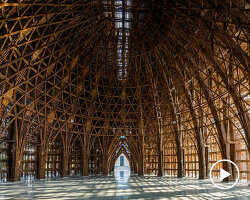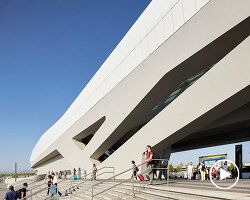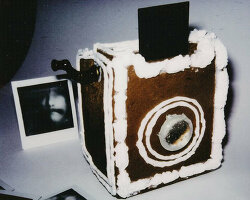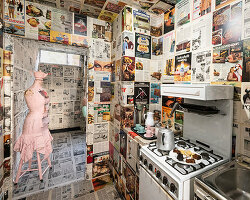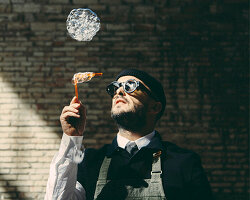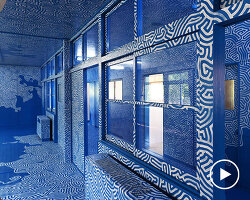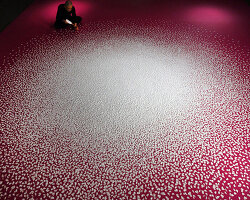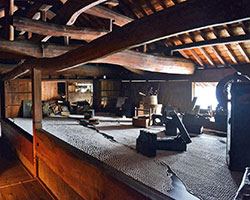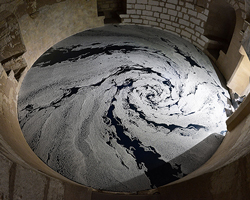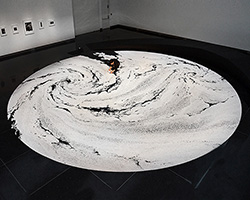from anywhere from a few days to multiple weeks, motoi yamamoto sits on the floor surrounded by his intricately-arranged labyrinths and landscapes made of salt, meticulously giving form to his memories. having experienced the painful loss of his sister, and later his wife, the japanese artist has carefully created numerous salt-based art installations both at home and abroad as a way of preserving the cherished recollections of his family. ‘continuing to create precious memories so as not to forget them is a common thread across my work,’ he shares with designboom. ‘my works are devices to ward against the self-defense instinct of oblivion, as well as acts to retain important memories that are lost over time. I can only realize these goals by spending many hours on my process of building things up.’
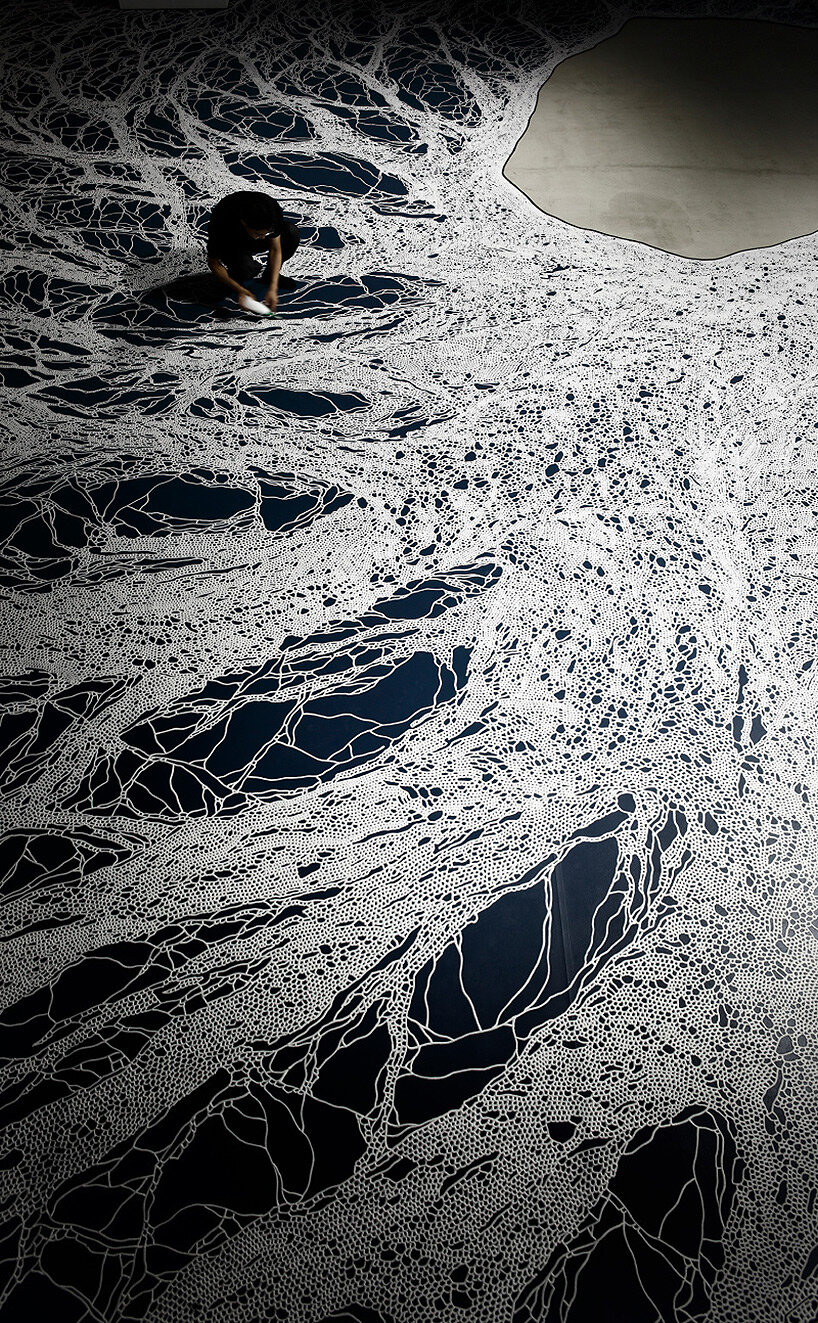
forest of beyond at the hakone open-air museum (kagnagawa) | part of the solo exhibition ‘to the white forest’, 2011
image by makoto morisawa, all images courtesy of motoi yamamoto
in choosing salt as an artistic medium, motoi yamamoto shapes ‘a memory of life’, drawing on the cultural notions of salt as purifying and cleansing, and its importance in japanese funerals. the artist is also deeply attracted to ‘its beautiful whiteness’. ‘it is almost as if this soft whiteness is gently receiving the contents of my heart,’ he shares. yamamoto has held exhibitions of his expansive and elaborate saltworks across a unique array of spaces — from a medieval castle tower at aigues-mortes, a 13th century walled city in southern france, to an abandoned home turned art-house on a remote japanese island in the seto inland sea. many of his exhibitions have involved an important final action at the show’s closing — returning the salt used in the work to the sea. yamamoto invites people to gather on the last day of the exhibition to destroy the work, collect the salt, and return it to the sea. ‘though it may just be a mere moment in the long course of history, the intent here is to return the salt used as a part of the work to the natural cycle once more,’ the artist says.
designboom spoke with motoi yamamoto about his widely celebrated archive of work across the world, how his upbringing has shaped his creative philosophies, and shares a preview of his upcoming work.
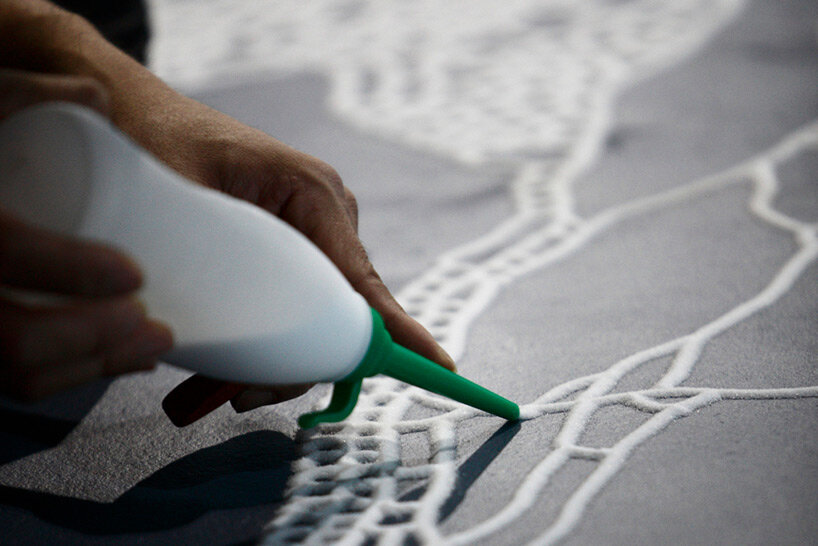
forest of beyond at the hakone open-air museum (kagnagawa) | part of the solo exhibition ‘to the white forest’, 2011
image by makoto morisawa
designboom (DB): what aspects of your background and upbringing have shaped your creative principles and philosophies?
motoi yamamoto (MY): my mother is my biggest influence, and my homeroom teacher in junior high school gave me the opportunity to create my current production style. I learned how to approach life from my mother, and the power of keeping going from my teacher. of course, the deaths of my sister and wife are the biggest motivation behind why I continue to create. other influences include my experience working as a lathe operator at a shipyard after graduating from an industrial high school, as well as quitting due to the plaza accord. after that, I continued to make presentations as an artist while working for many years as an administrator at a company. this is another key experience that I draw on for support.
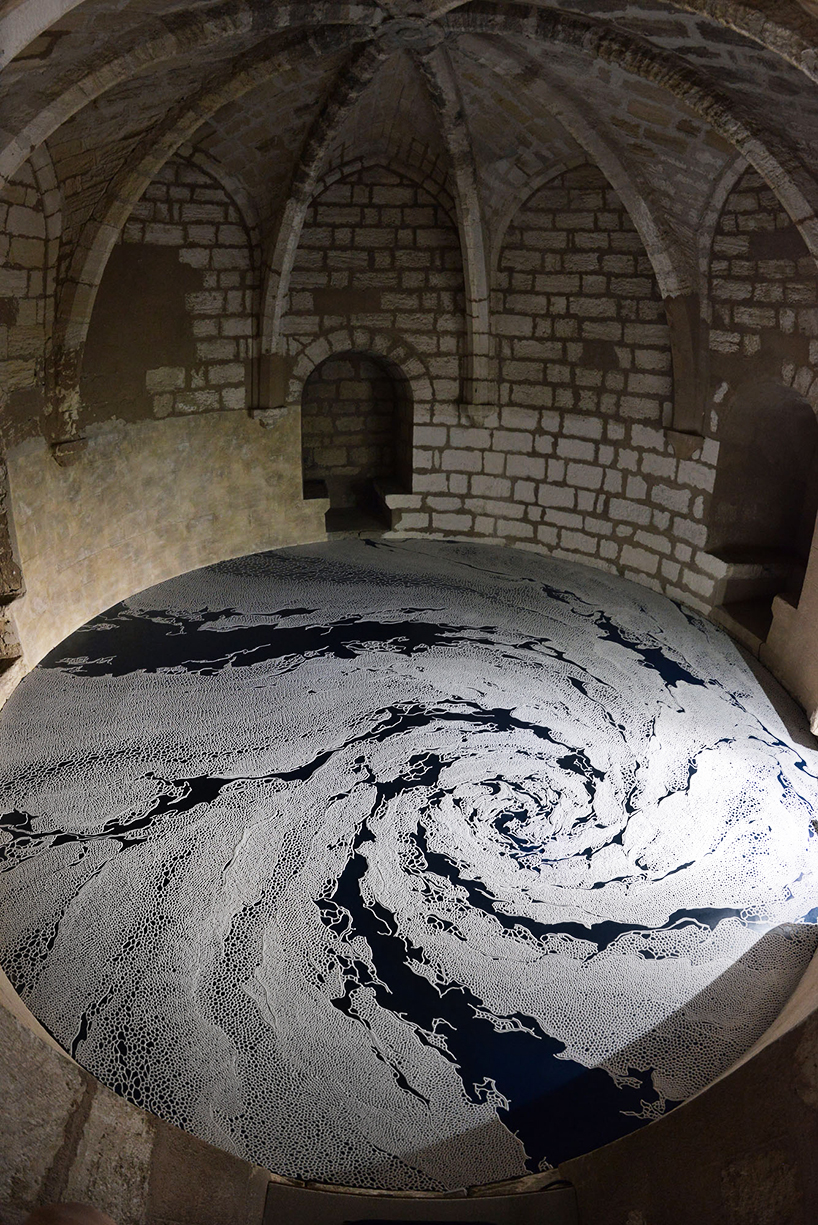
inside the medieval castle tower at aigues-mortes, a 13th century walled city in southern france, motoi yamamoto completed two monumental installations made of salt – pictured here, ‘floating garden’.
read more on designboom here
DB: what draws you to salt as an artist medium, and what is its personal meaning to you?
MY: the appeal of salt as a medium is, after all, the cultural background it brings with it. there are profound reasons why salt is used in rituals related to life and death in many countries, and this medium also has regional diversity. since ancient times, many japanese people have equated salt with cleansing. furthermore, it is a precious item that is essential for maintaining life, and also readily suggests associations with the sea. another important factor is that salt is a food which everyone, from small children to the elderly, has touched and tasted. people who view my works can connect them with personal memories (for example, the taste of the salted rice balls that their mother made for them), enabling everyone to form their own stories.
MY (continued): the main reason that I continue to use salt is because of its beautiful whiteness. since salt is a colorless, transparent crystal, it has a slightly transparent quality when viewed from up close, and it is almost as if this soft whiteness is gently receiving the contents of my heart. I also use salt because it is a difficult medium to control and results in very fragile works. salt does not bond together, so it breaks apart immediately when touched and dissolves when affected by humidity. these traits are a negative factor in terms of maintaining and protecting the work, but this instability always reminds me that all things are subject to change and that life is finite.
at the end of an exhibition, we undertake the project of returning the salt to the sea. this essentially involves working together with the viewers to destroy the work and return the salt to the sea, but what I like about the process is that I only use this natural medium for a fleeting moment in my work before returning it to its place in nature. this project enables me to experience how my life in this world is a mere moment in the long, long passage of time.
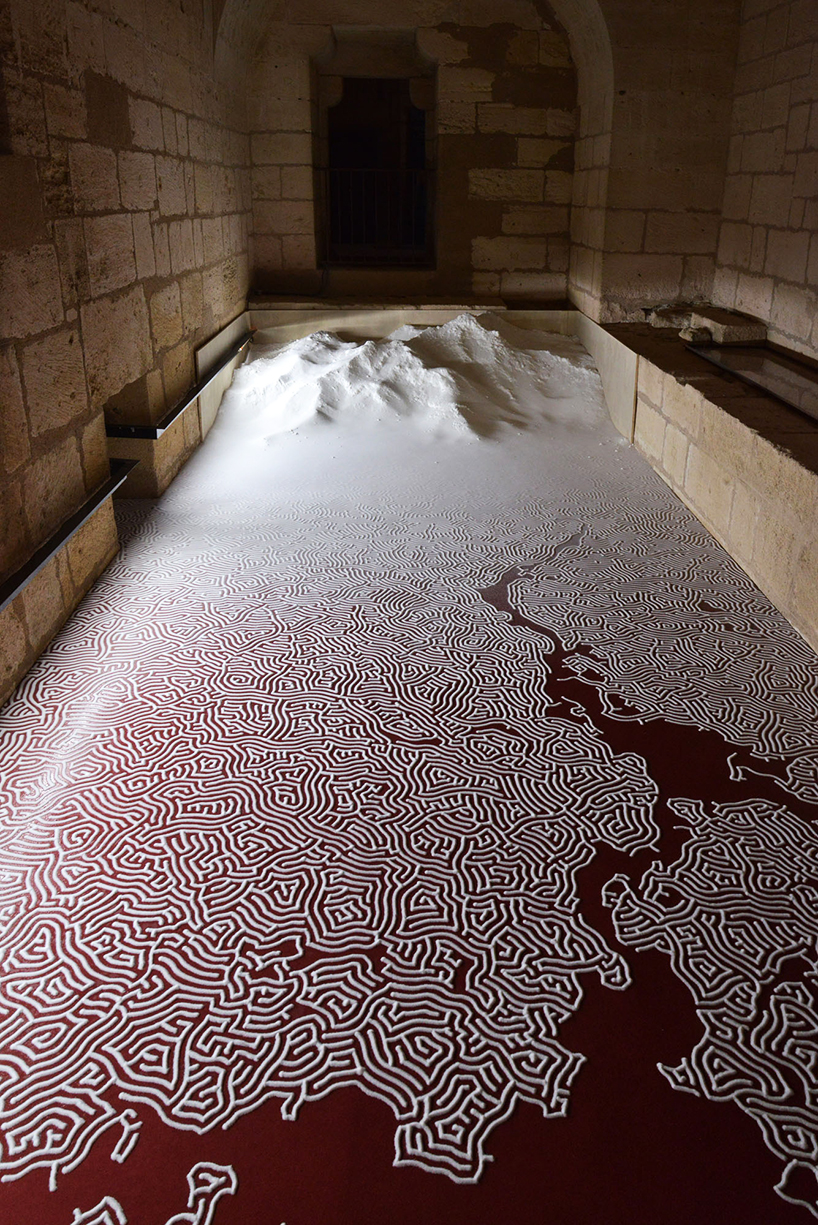
the installation ‘labyrinth’ is housed within the castle ramparts at aigues-mortes
read more on designboom here
DB: how planned is the configuration of each piece? is there room for spontaneity and improvisation while you are working?
MY: I draw a plan for the piece in advance, but the degree of completion at this stage is only about 70%. based on building schematics and photographs, I decide the general shape and flow of the piece and create a schedule for the period that I will spend there producing it. however, I only get a sense of details such as lighting, floor, and humidity conditions once I actually go to the site, so the plan is finalized based on these factors. that being said, the plan is only for deciding the rough shape of the piece, and I always improvise the details. you could say that whatever my hand is sensing and whatever my heart is feeling in that moment guides my drawing.
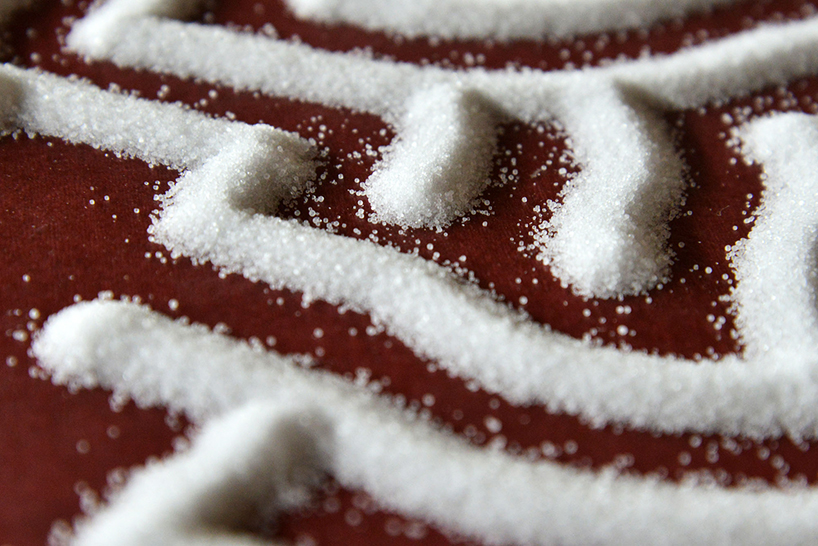
the narrow stone passageway has been filled with an intricate maze of carefully-placed salt lines
read more on designboom here
DB: thematically, what is the common thread that underpins your work overall?
MY: ‘continuing to create precious memories so as not to forget them’ is a common thread across my work. my works are ‘devices to ward against the self-defense instinct of oblivion,’ as well as ‘acts to retain important memories that are lost over time.’ I can only realize these goals by spending many hours on my process of building things up.
DB: what do you hope audiences take away from your work? are there certain themes you hope your work provokes discussion about?
MY: I essentially keep creating works to resolve my own issues, but I hope that they provide viewers with an opportunity for contemplation while taking in the various settings and surroundings of the works. many people who, like me, have lost a loved one can feel something from the works. even as I was writing this answer, I received a message from someone who had lost a sister due to a sudden illness. this person had seen my ‘sakura shibefuru’ piece while it was being exhibited and wrote to tell me that, ‘the falling petals are like the universe, and when I looked at the salt forming these petals up close, I could really feel a vitality, slight warmth, and softness residing in the substance, despite it being an inorganic material. I felt the flow and circulation of how one thing moves another.’
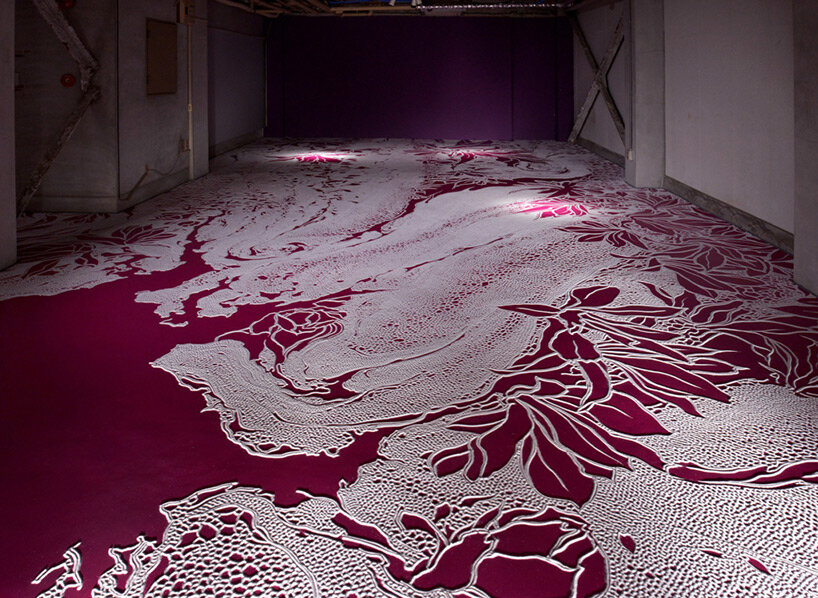
the season of purple at 21st century museum of contemporary art, kanazawa
part of culture city of east asia 2018 kanazawa: altering home
DB: what’s the best moment of the day for you?
MY: the best moment of my whole day is when I see my daughter’s smiling face, whether it’s when she’s drawing something well, eating one of the croquettes she likes so much, or playing with her beloved cats. meanwhile, my daughter said that ‘my dad seems to be happiest when he’s having a drink and eating fish!’
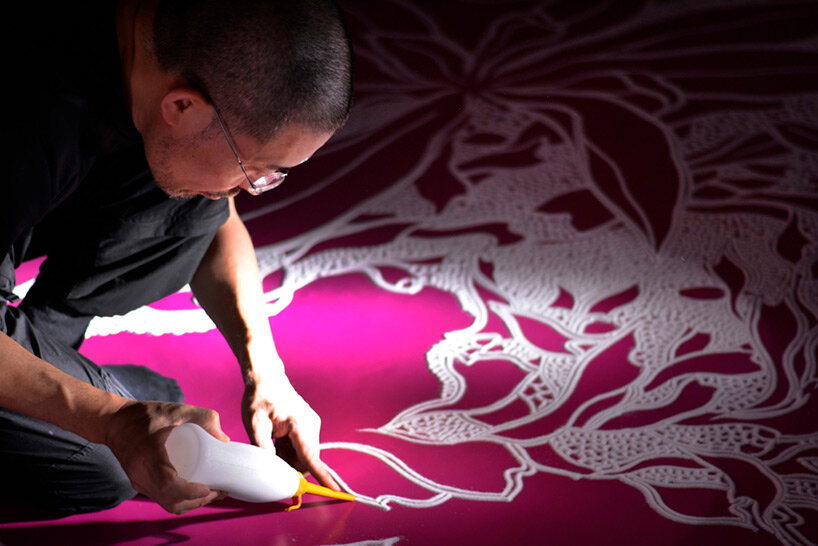
the season of purple at 21st century museum of contemporary art, kanazawa
part of culture city of east asia 2018 kanazawa: altering home
image by toshiyo suzuki
DB: what are you currently fascinated by, and how is it feeding into your artistic practice?
MY: ‘fascinated’ might not be the right word for it, but I currently spend most of my time on and am deeply involved in raising my daughter. I would like to create works that allow me to look unwaveringly into the future even as I think back on my precious memories.
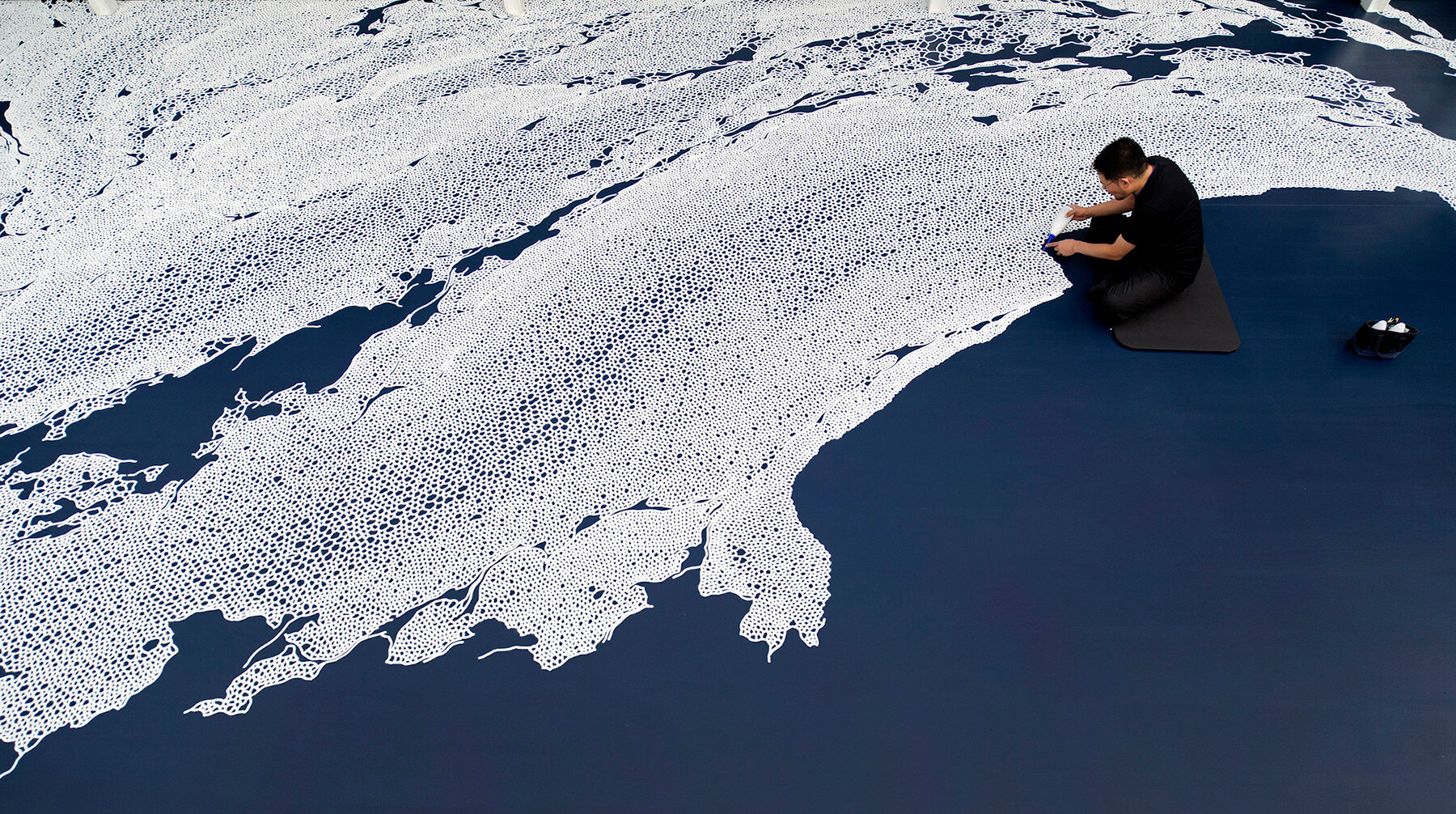
floating garden, 2013 | solo exhibition at ernst barlach haus, hamburg | image by andreas weiss
DB: can you tell us about any upcoming projects you are particularly excited about?
MY: I will create ‘labyrinth’ at the oku-noto triennale 2020+ this fall, a work that connects past and future. I will produce this large-scale installation work in a space that used to be a nursery school, where I plan to draw a complex, maze-like pattern on the floor, walls, and ceiling to create a garden made from a large amount of salt.
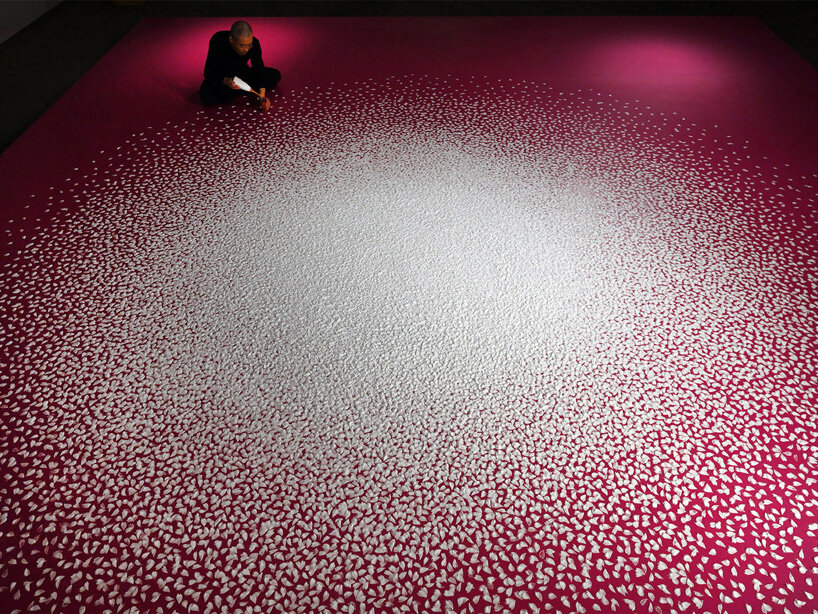
motoi yamamoto has created a monumental installation of about 100,000 cherry blossom petals made of salt for his solo exhibition ‘sakura shibefuru’ (falling cherry petals) at the setouchi city art museum
read more on designboom here
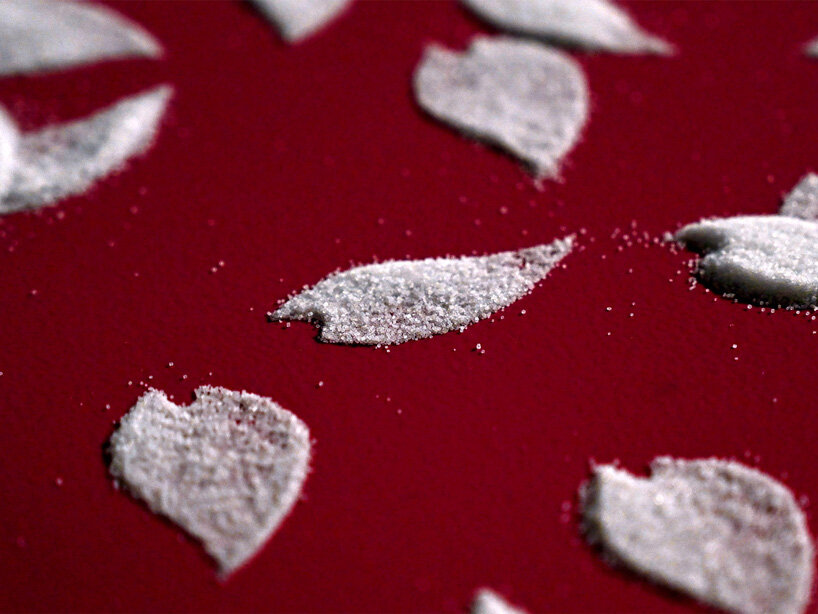
the artist developed the salt petals one by one, which took 55 hours and about nine days of work
read more on designboom here
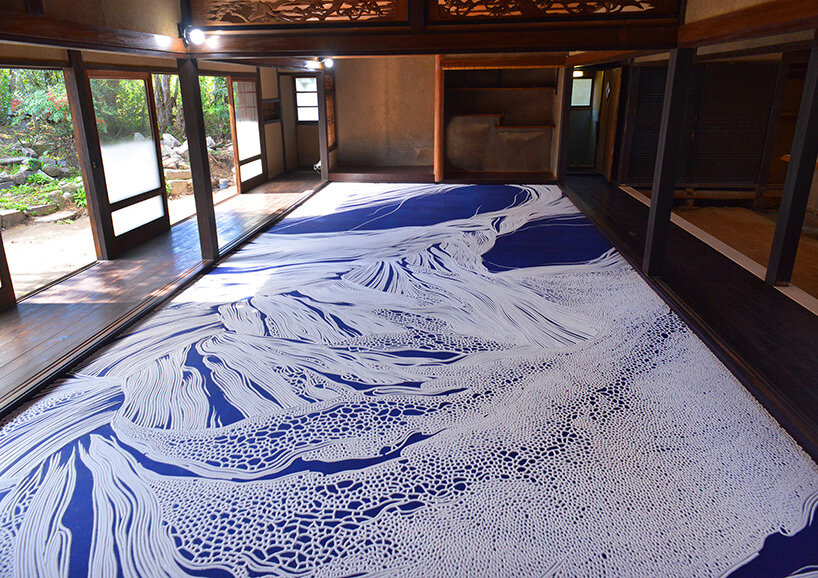
the dragons of lapis lazuli at OTSU1731-GOEMON bath house (onomichi)
part of ‘a corridor of art through the seas and mountains + onomichi art crossroads’, 2017
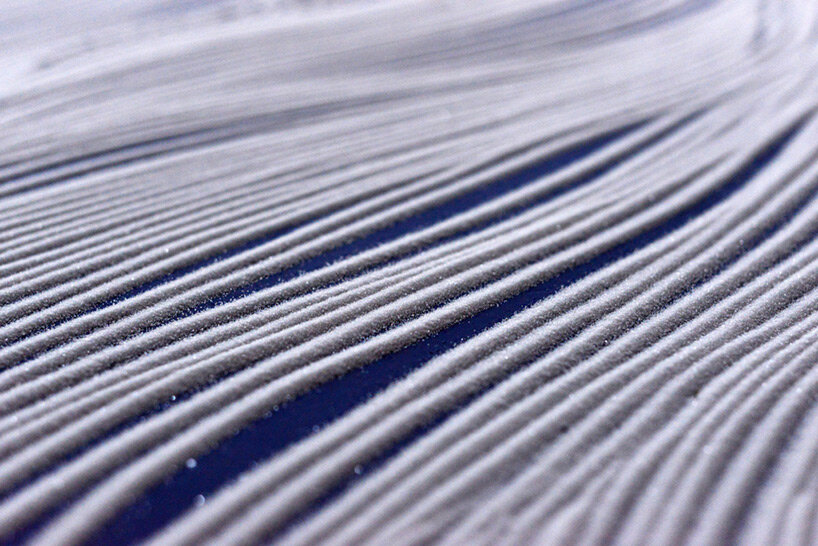
the dragons of lapis lazuli at OTSU1731-GOEMON bath house (onomichi)
part of ‘a corridor of art through the seas and mountains + onomichi art crossroads’, 2017
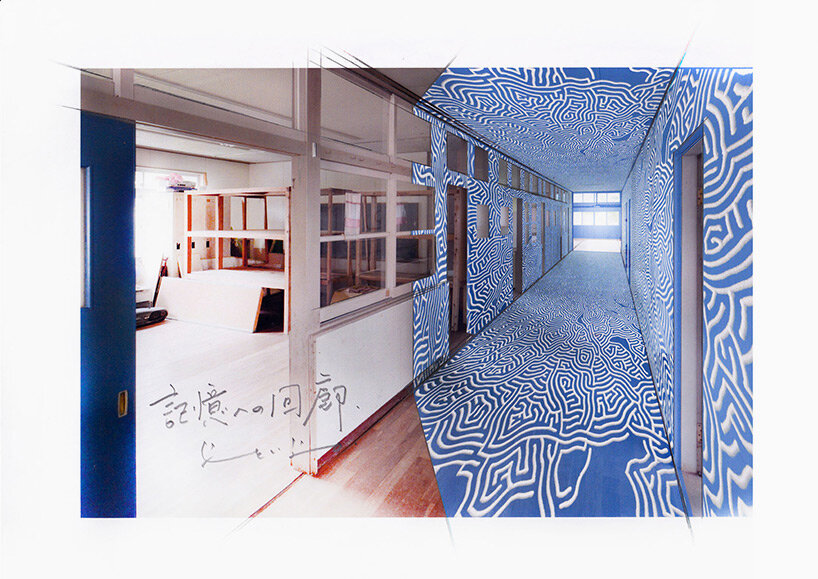
drawings for the artist’s upcoming work at the suzu oku-noto triennale 2020+
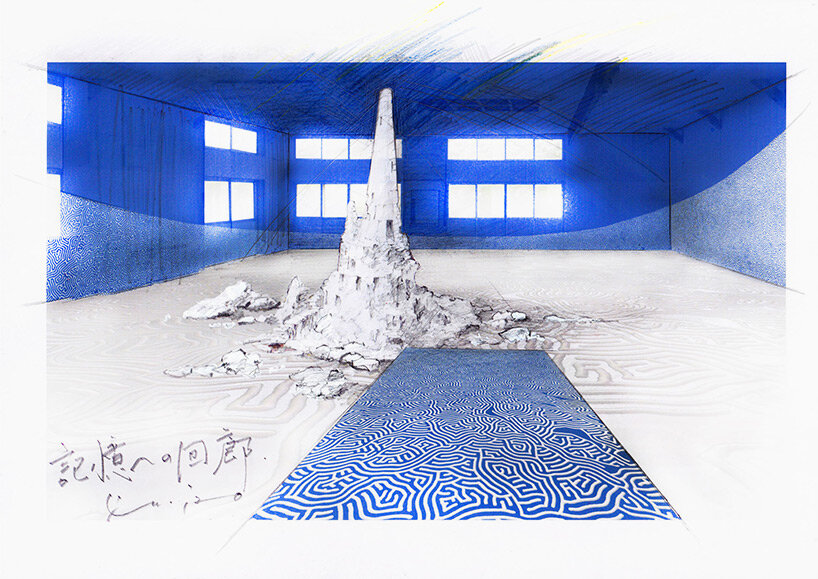
drawings for the artist’s upcoming work at the suzu oku-noto triennale 2020+
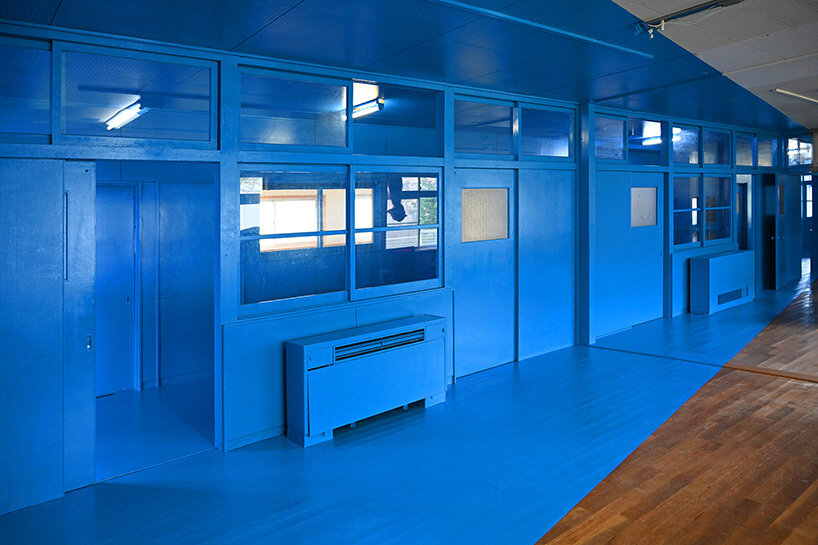
in-progress photo of the artist’s upcoming work at the suzu oku-noto triennale 2020+

in-progress photo of the artist’s upcoming work at the suzu oku-noto triennale 2020+
art interviews (138)
dbinstagram (2250)
food art (219)
motoi yamamoto (8)
PRODUCT LIBRARY
a diverse digital database that acts as a valuable guide in gaining insight and information about a product directly from the manufacturer, and serves as a rich reference point in developing a project or scheme.
